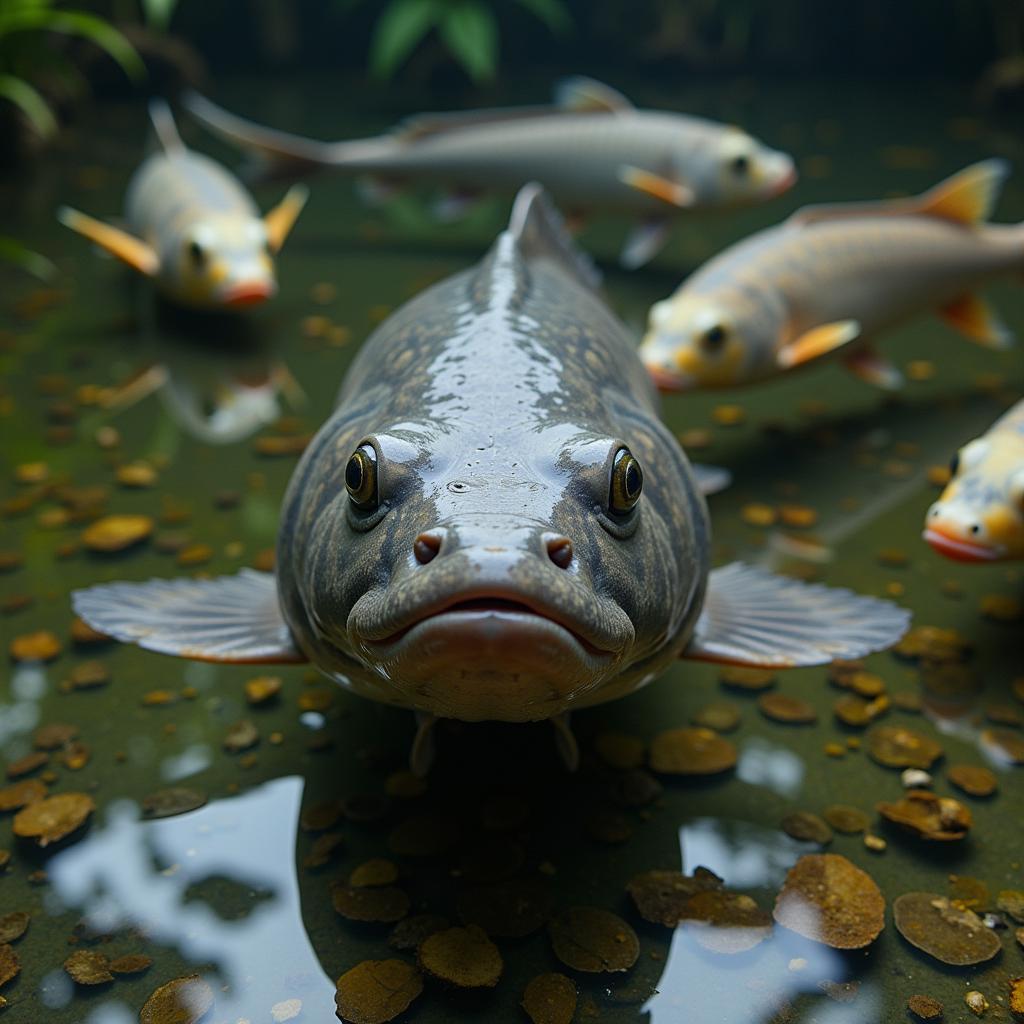African Catfish Farming in India: A Growing Trend
African catfish farming has emerged as a prominent aquaculture practice in India, attracting both seasoned and aspiring fish farmers. This comprehensive guide delves into the intricacies of raising this fast-growing species, examining its profitability, challenges, and the impact on local ecosystems.
The Rise of African Catfish in India
Native to Africa, Clarias gariepinus, commonly known as the African catfish, has found a welcoming environment in India’s tropical climate. The species boasts a remarkable growth rate, reaching market size in a shorter period than many indigenous fish varieties. This rapid growth, coupled with its adaptability to high stocking densities, makes it an attractive option for farmers seeking quick returns.
“The demand for fish protein in India is constantly growing,” shares Dr. Anjali Kumar, a leading aquaculture researcher based in Kerala. “African catfish, with its high yield potential, offers a viable solution to bridge this demand-supply gap.”
Advantages of African Catfish Farming
Several factors contribute to the popularity of African Catfish Farming In India:
- Fast Growth: These catfish reach marketable size within 6-8 months, significantly shorter than other commonly farmed fish.
- High Stocking Density: Their ability to tolerate high stocking densities optimizes land and resource utilization.
- Disease Resistance: African catfish exhibit relatively good resistance to common fish diseases, minimizing losses.
- Adaptability: They thrive in diverse environments, including ponds, tanks, and cages, offering flexibility to farmers.
- Market Demand: The growing popularity of catfish dishes in India ensures a steady market for this fish.
Challenges and Concerns
Despite its advantages, African catfish farming in India is not without its challenges:
- Environmental Impact: Concerns exist regarding the potential escape of this non-native species into local ecosystems and its impact on indigenous fish populations.
- Water Quality Management: Intensive farming practices can lead to water pollution if not managed carefully.
- Disease Outbreaks: While generally resistant, poor management practices can increase the risk of disease outbreaks.
- Market Price Fluctuations: As with any agricultural commodity, market prices can fluctuate, impacting profitability.
Sustainable Farming Practices
To mitigate the environmental impact and ensure long-term sustainability, adopting responsible farming practices is crucial:
- Biosecurity Measures: Implement stringent biosecurity measures to prevent the escape of African catfish into the wild.
- Waste Management: Utilize effective waste management systems to minimize water pollution from uneaten feed and fish waste.
- Responsible Sourcing: Procure fingerlings from certified hatcheries that adhere to ethical breeding practices.
- Polyculture Systems: Explore integrating African catfish with other compatible species in polyculture systems to enhance biodiversity and resource utilization.
 African Catfish in Polyculture System
African Catfish in Polyculture System
Is African Catfish Farming in India the Right Choice?
African catfish farming presents a lucrative opportunity for Indian farmers seeking to capitalize on the rising demand for fish protein. However, careful consideration of the potential environmental impact and adherence to sustainable farming practices are essential for long-term success and ecological balance.
Looking for more insights on the legalities and regulations surrounding African Catfish farming in India? Check out our articles on African fish banned in India and African cat fish ban in India.
FAQs
1. What is the average size of an African catfish at harvest?
African catfish typically reach a marketable size of 1-1.5 kg within 6-8 months.
2. What kind of feed is suitable for African catfish?
Commercially available catfish feeds, supplemented with plant-based protein sources like soybean meal or rice bran, are suitable.
3. Is it legal to farm African catfish in India?
The legal status of African catfish farming varies across different states in India. It’s crucial to consult local authorities for specific regulations.
4. What are the major diseases affecting African catfish?
Common diseases include bacterial infections, parasitic infestations, and fungal diseases. Proper water management and biosecurity measures are essential for prevention.
5. How can I learn more about sustainable African catfish farming practices?
Numerous resources are available online and through government agricultural extension programs providing information on sustainable aquaculture practices.
Need More Information?
Explore these additional resources on our website:
For personalized guidance and support in establishing your African catfish farm, contact us at:
Phone: +255768904061
Email: [email protected]
Address: Mbarali DC Mawindi, Kangaga, Tanzania
Our team of experts is available 24/7 to assist you in navigating the intricacies of African catfish farming in India.
